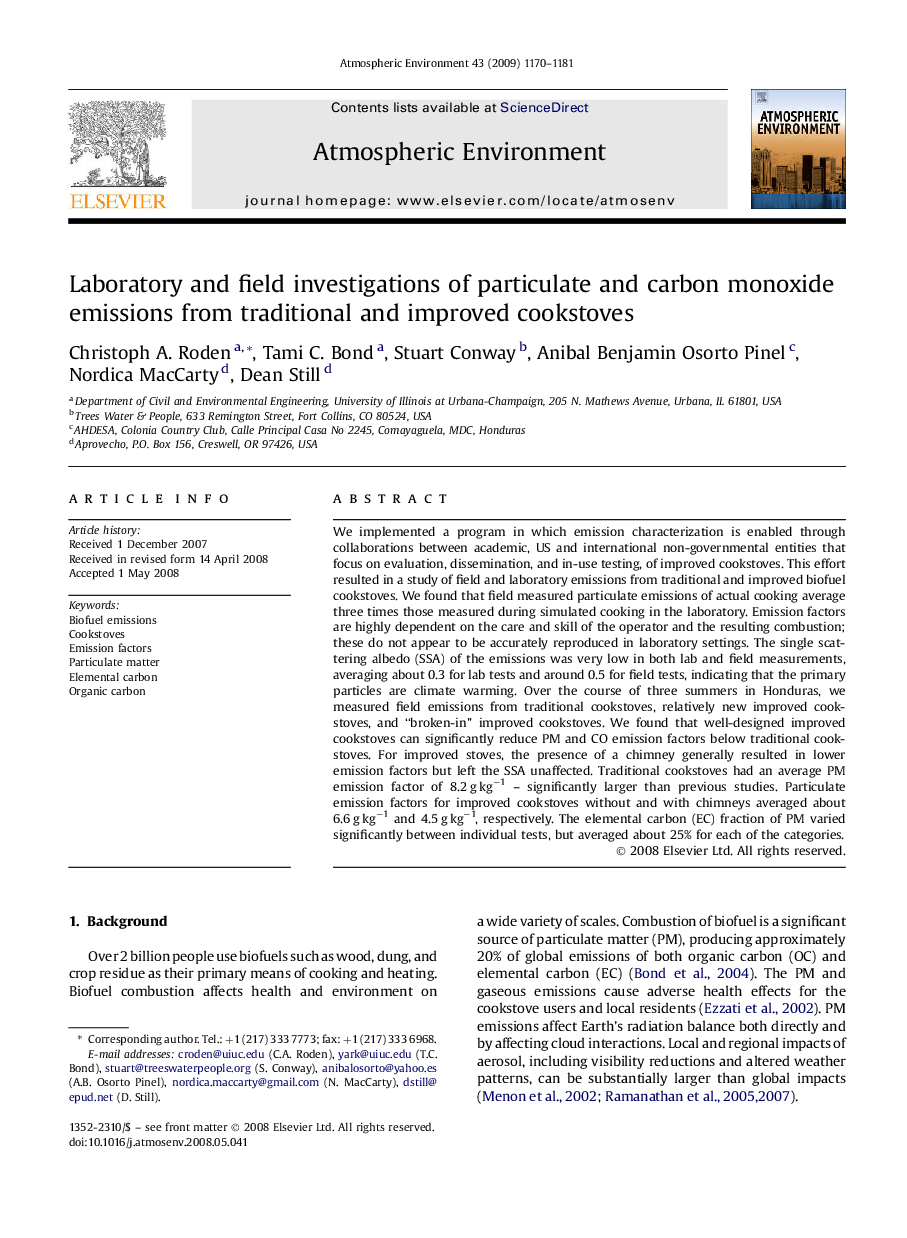| کد مقاله | کد نشریه | سال انتشار | مقاله انگلیسی | نسخه تمام متن |
|---|---|---|---|---|
| 4441998 | 1311133 | 2009 | 12 صفحه PDF | دانلود رایگان |

We implemented a program in which emission characterization is enabled through collaborations between academic, US and international non-governmental entities that focus on evaluation, dissemination, and in-use testing, of improved cookstoves. This effort resulted in a study of field and laboratory emissions from traditional and improved biofuel cookstoves. We found that field measured particulate emissions of actual cooking average three times those measured during simulated cooking in the laboratory. Emission factors are highly dependent on the care and skill of the operator and the resulting combustion; these do not appear to be accurately reproduced in laboratory settings. The single scattering albedo (SSA) of the emissions was very low in both lab and field measurements, averaging about 0.3 for lab tests and around 0.5 for field tests, indicating that the primary particles are climate warming. Over the course of three summers in Honduras, we measured field emissions from traditional cookstoves, relatively new improved cookstoves, and “broken-in” improved cookstoves. We found that well-designed improved cookstoves can significantly reduce PM and CO emission factors below traditional cookstoves. For improved stoves, the presence of a chimney generally resulted in lower emission factors but left the SSA unaffected. Traditional cookstoves had an average PM emission factor of 8.2 g kg−1 – significantly larger than previous studies. Particulate emission factors for improved cookstoves without and with chimneys averaged about 6.6 g kg−1 and 4.5 g kg−1, respectively. The elemental carbon (EC) fraction of PM varied significantly between individual tests, but averaged about 25% for each of the categories.
Journal: Atmospheric Environment - Volume 43, Issue 6, February 2009, Pages 1170–1181